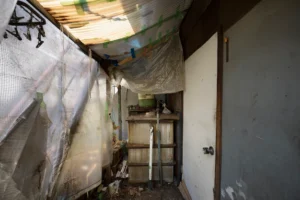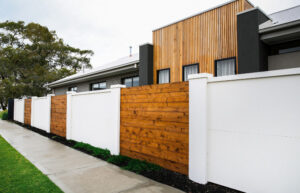Concrete is an innovative alternative to concrete, brick, and other artificial products. It is durable, long-lasting, and easy to repair.
Unlike precast concrete, which requires large amounts of materials and energy, natural stone only requires quarrying, fabrication, finishing, and transportation. It also has a much lower global warming potential (GWP).

Whether you are an experienced contractor looking to increase your profits or a do-it-yourself homeowner wanting to turn your worn, discolored concrete driveway into a beautiful, custom stone look, we have the needed products. We offer complete packages, including the diamond polishing pad and all the grits you need to achieve an excellent, commercially acceptable polished finish. Our system is a cost-effective alternative to using an expensive contractor or purchasing and installing a traditional stamped overlay.
Our StoneKrete Roll-Top Cement transforms worn, discolored concrete and cement surfaces into a high-quality, decorative surface with the appearance of hand-carved stone at a fraction of the cost. It can be applied in a single step with minimal downtime compared to traditional concrete overlays. The surface can be stained or colored to match existing colors and textures. A clear, solvent-based acrylic sealer is then applied to help protect the finish from water and staining.
A full line of micro-top concrete overlay mixes can be used in either commercial or residential applications to repair, resurface, or beautify any substrate. These mixes provide a durable, long-lasting, abrasion-resistant surface to withstand heavy traffic and use. They can be used on new construction projects, over existing concrete, as a base coat for stamped overlays, or as a stand-alone micro-finish coat.
Our Stonecrete Resurfacing mix is a powder blend of polymers that can be mixed with your local cement, sand, and water to create patching and resurfacing mixes for restoring stained or deteriorated concrete to its original condition. These mixes can be applied up to 1” thick for patching and repitching repairs or 1/16th – 1/8th inch thick for thin resurfacing applications.
A ready-to-use product in powder form can color the joints and overshadow the final application surface (brush strokes/time effect). This is the perfect solution to enhance and create a realistic stone finish on concrete or plaster surfaces.
Concrete is an architectural wall system that offers the beauty of hand-laid natural stone at a fraction of the cost. It’s also environmentally friendly, as it’s made from recycled concrete. This helps slow the production of new concrete and frees up landfill space. It can be applied directly to existing brick, block, or other masonry walls or built on-site.
It’s recommended to have a professional install your concrete, as the installation process requires careful attention to detail. It is a very heavy material and must be handled correctly to avoid damage during transportation and installation. If installing on a stucco surface, it’s important to properly prepare the surface with a bonding agent before applying any concrete product. It is essential to have good ventilation during the application process. A dust mask is also advised to protect your lungs from dust particles.
When installing, applying a scratch coat of masonry cement to the back of each stone is recommended before setting. This will help hide any joint lines and promote proper adhesion. The masonry cement should be tinted to match the stone color to hide the joints. Install each course of stone, starting at the bottom and working your way up, ensuring that any cornerstones are installed first. If using EasyFit style stone, the corners should have long and short legs and should be alternated in each course.
After the stone has cured, it is necessary to seal the concrete. This will protect it from dirt, rain, and other weather elements that can cause damage to the surface. It will also create a protective barrier from salt and other chemicals used in construction, which can stain or discolor the surface.
Efflorescence is a naturally occurring phenomenon on concrete and masonry products when salt deposits form as water that penetrates behind the stone evaporates. It can be removed by scrubbing the stone with a soft brush and a solution of 1 part white vinegar to 5 parts water, followed by a thorough rinse.
A polished concrete floor with an active maintenance program will only last long, like a car. Regular dust mopping with warm water and a water-based neutral cleaner keep stone surfaces looking their best. Using protectants such as impregnating sealers helps keep stains from setting in. Our professional team can provide a comprehensive maintenance plan to fit your needs.
A properly maintained concrete surface is resilient against regional weather, UV exposure, harsh chemicals, and everyday wear and tear. Our product lines are designed to be durable workhorses that keep your space in top condition.
Our products are easy to maintain and designed for a lifetime of use. With a simple clean-up, a binding agent refreshes every few years, and the use of scum and hard water deposit remover, your Rubber Stone counter can withstand heavy spills, harsh chemicals, and everyday use.
StoneCrete provides a complete line of concrete countertop care and maintenance services to ensure your investment in natural stone continues to perform well. We offer a lifetime warranty against cracking of the product that is not caused by misuse and can repair any damage that may occur due to normal wear and tear during that time.
Concrete countertops are more affordable than many other counters, but that doesn’t mean they’re not susceptible to the same wear and tear as other stone counters. They will need to be sealed upon installation and then resealed annually. They will also need to be routinely waxed to help resist etching.
The most common cause of etching on a concrete counter is using acidic foods or cleaning products. If you see a dark spot on your counter, it is most likely due to etching. It would help if you honed the concrete counter and then resealed it to fix this. If the etching is severe, you must re-cement the area and repour the counter. In most cases, this will not be necessary. A service call can be scheduled, and a technician will assess the situation and determine if further repair is required. Natural stone is an incredible material for the home. It looks stunning and leaves a great impression on guests. However, like any surface, it requires special care to keep it pristine.
If you have a damaged piece of natural stone – a chip, crack, deep scratch, or other damage – there are several ways to repair it. It depends on the type of damage, how bad it is, and what type of finish is on the stone. The damage can be repaired with a resin if it is a small chip or deep scratch. If it is a crack, it must be squared off before knitting in a new piece of stone. A good place to start is with a local stone mason yard; they are happy to help you identify the stone.
There are also several products to repair and maintain concrete surfaces, including resurfacing and coloring. These products are designed to make the concrete look better and last longer while repairing minor damage. These products can protect the concrete from water, ice, and chemicals.
Another product for repairing and maintaining concrete is a biodegradable cleaner and conditioner for polished concrete and stone. It is a safe and easy way to keep your concrete and stone looking great and helps prevent staining. It is also the recommended product to use before applying any polish to concrete countertops.
If you have an outside stone foundation, it is important to have a professional examine it regularly for moisture problems. Moisture will weaken the mortar and stones, which may cause them to break apart or crumble. Often, this is caused by improper ground grading, which means that rainwater and snow melt are flowing toward the building instead of away from it. Having your foundation professionally graded will help prevent this.
Repairing all severely spalled or crumbling stones is a good idea, but leaving some of the other minor imperfections alone is often best. This is particularly true of hairline cracks in a stone building. Generally, these cracks will only cause significant structural problems if they are in a major load-bearing area. Attempting to patch them with traditional masonry repair materials will result in mismatched colors and textures. Instead, removing the deteriorated piece of stone and shaping another to fit into the hole is a better option. This is a more time-consuming process, but it will give the restoration a more uniform appearance.

 A boundary wall can be a great way to add aesthetic value to your property. It can be designed in various styles and materials, but choosing a wall design that complements the style of your home and surrounding landscape is important. It is also important to consider local council regulations when choosing a front and boundary wall design. These may include restrictions on wall height, materials, or specific design elements.
A boundary wall can be a great way to add aesthetic value to your property. It can be designed in various styles and materials, but choosing a wall design that complements the style of your home and surrounding landscape is important. It is also important to consider local council regulations when choosing a front and boundary wall design. These may include restrictions on wall height, materials, or specific design elements.